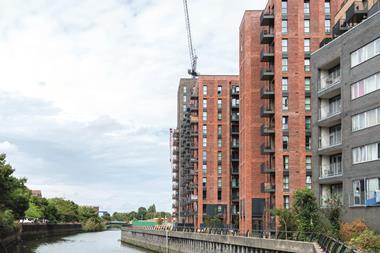Once, we saw work only as a chore – something to be endured so that we could enjoy the rest of our lives. This makes no sense, however, as on average Brits will spend 3,515 full 24-hour days at work over the course of their lives. It’s time that should be fulfilling and enjoyable, rather than spent clockwatching.

Thankfully, younger workers are challenging the status quo around work. They are tasking us to think about wellness and wellbeing in new ways and with new emphasis. As an industry, this provides a tremendous opportunity.
Workplace design alone is not enough to deliver ever-happy workers. However, it would be naive to undermine the impact of a well-executed physical space on the mental health of employees.
Last year, our Wellness Matters report focused on the topic and it is also explored in detail in the British Council for Offices’ new guide to specification.
The guide details three simple factors for building wellness into the workplace: efficiency, effectiveness and engagement. For too long, the UK property industry has focused on the first two. People essentially thought incorporating the latest technology or installing as many services as possible was the secret to happiness.
Instead, rather than follow trends, we need to refocus our attention and energy on that final ‘e’: engagement. An engaged workforce is one that feels supported, empowered and valued. This is about more than appeasing demanding trendy graduates. It makes business sense. Wellness is clearly linked to productivity, meaning that even the most hard-nosed businessperson should understand the value of trying to shape a well, engaged workforce.
Give control
There are a number of ways we can do this. The first is by giving employees the ability to control local environment settings so that they meet each worker’s personal wellbeing and comfort expectations. For instance, smart technology can give employees autonomy over the lighting, heating and air quality settings of their workspaces by building a truly responsive office.

Exercise can have a positive impact on mental health. So let’s build opportunities for movement into our offices. Instead of installing that fifth lift, think about building dynamic staircases that invite staff to get up and move. Havas at King’s Cross is a great example – its iconic staircase zigzags across the central space to create a sense of activity between floors.
Engagement is also about building desirable offices that look and feel like a great place to work. It’s important that company brand, culture and values are reflected in the base build. Facebook’s HQ at Rathbone Square is a great example of just how much impact this can have. The working space has experience woven into its core, bringing to life the Facebook brand through bright colour, bold feature walls and plentiful amenities, making it a little pocket of Silicon Valley in the heart of London.
For new-builds, the opportunities are vast. London’s Project North employed a workplace psychologist on the team at the beginning of the build to make sure the strategy was employee-first. More of us need to think about what we can learn from different disciplines.
Occupier engagement
Of course, we only know if a workplace is effective through direct engagement with occupiers. Post-occupancy evaluations provide an opportunity to assess whether a building has boosted wellness, but these can be too late. Instead, we need occupiers to engage with us ahead of projects and during tenancy, so we can adapt our workplaces to really aid their individual needs. After all, wellness is personal.
The World Health Organization now defines health as “a state of complete physical, mental and social wellbeing and not merely the absence of disease or infirmity”. It may sound grandiose, but it’s worth keeping in mind. By thinking smartly about our offices, we can create high-quality, people-centric experiences. We can deliver that sense of belonging and community at work.
And if you’re not sure where to start, I would suggest the British Council for Offices’ new guide to specification – it’s full of inspiration.
Paul Patenall is president of the British Council for Offices






























No comments yet